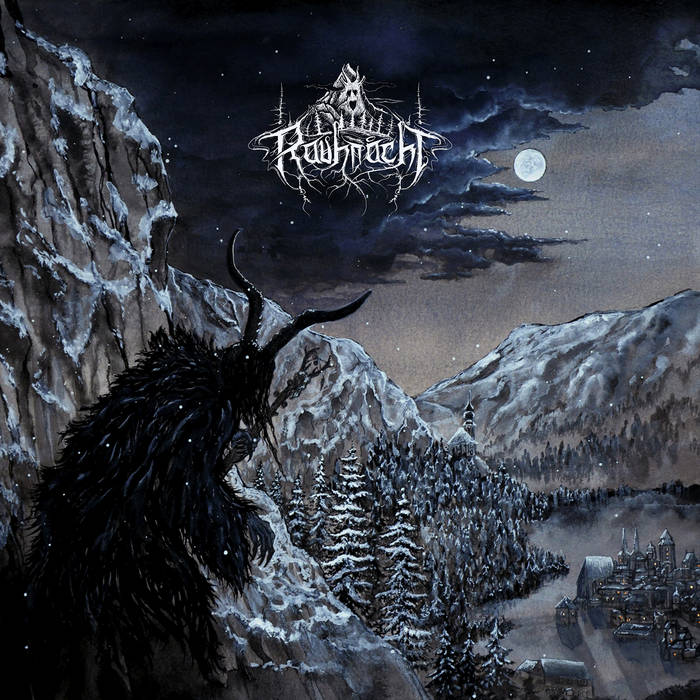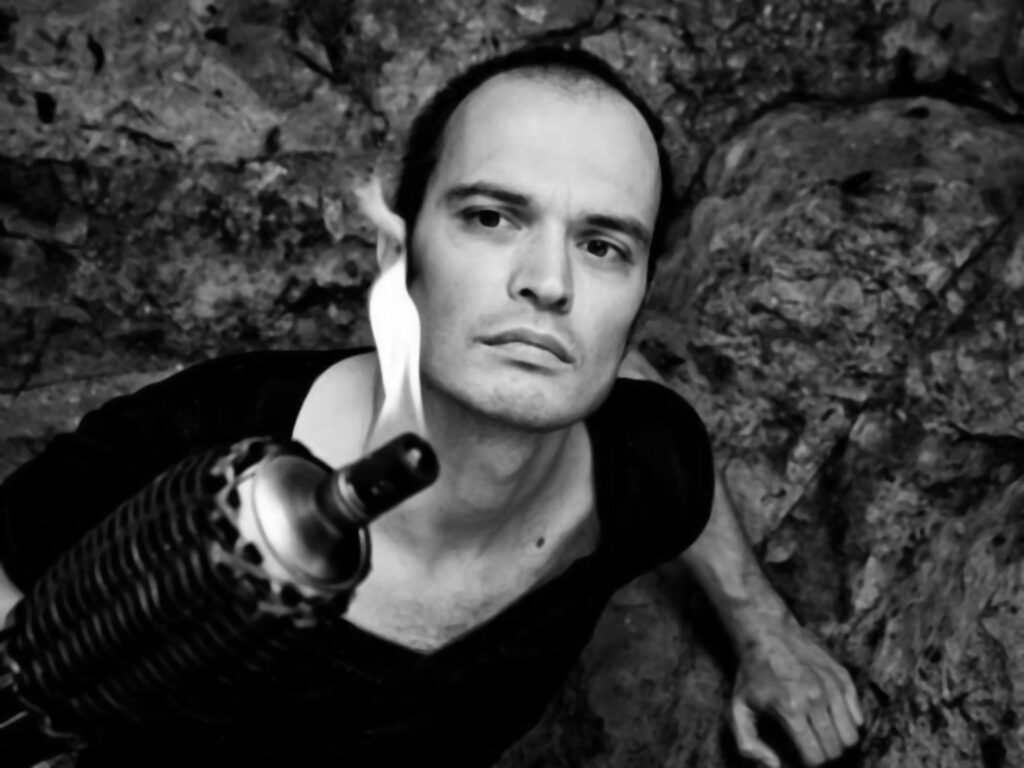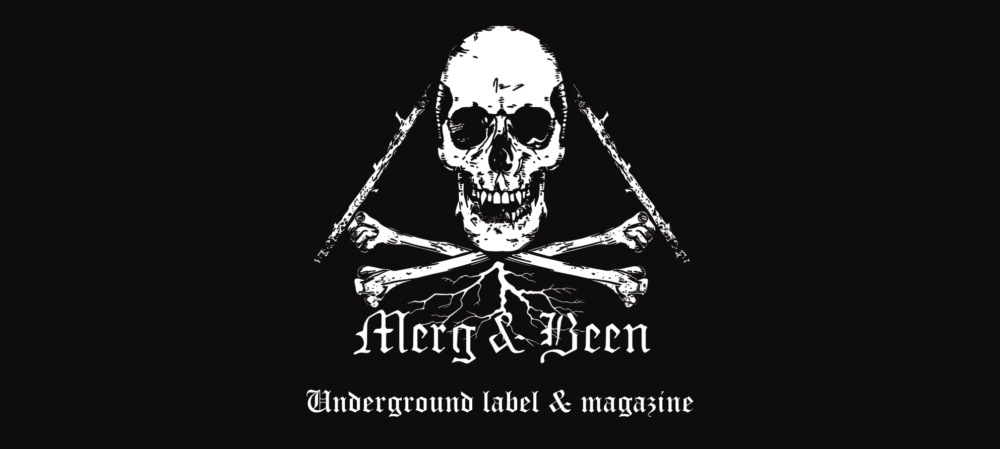
For more than thirteen years, dark echoes have been resounding through the Austrian mountains. With his unique fusion of local folklore and Black Metal, Rauhnåcht has carved out a distinct niche within the scene—one that he himself defined as Alpine Black Metal. What began as a personal vision has since grown into a recognizable style, inspiring and influencing other bands who have embraced the term and its aesthetic.
With the release of his latest album, it feels like the perfect moment to sit down with Stefan, the creative force behind Rauhnåcht, and explore both the origins of this Alpine Black Metal spirit and the ideas that shaped his newest work.
Since 2012, the harsh sounds of Rauhnåcht have echoed through the mountains. How do you look back on the past 13 years and what you have achieved with this project?
It all started with the sound of the unusual Alpine folk band Sturmpercht, which immediately struck me. I instantly felt that this vibe, together with the obscurity of old local sagas and myths, would perfectly fit in combination with Black Metal. So I built the debut album on the basis of samples from Sturmpercht tracks. On the following releases, I tried to find my own mix of myths and personal experiences—walking hidden mountain paths and being one with nature. Some songs still carry a very strong personal meaning for me, such as “Geist,” which embodies the feeling of total freedom after finally leaving my office job, or “Ein Raunen aus vergess’ner Zeit,” for which I walked alone through the winter woods, composing the lyrics and chorus in my mind. Whenever I listen to these songs, those deep emotions come back as if they were stored in the songs.
The name Rauhnåcht refers to a period full of mysticism and the transition between years. Is this for you purely thematic, or is it a kind of worldview woven into all your music?
I like the expression “worldview woven into music”! Music is all about emotion, and the emotion I want to express most is this mixture of deep, silent knowledge, wonder, and fear you feel when the boundaries of the known are about to collapse. This can happen between sleep and awakening, between the years, or during a solitary mountain trip when the otherworld opens for a brief yet timeless moment.

You were of course no stranger to the genre—since 1992 you have also been active with Golden Dawn. How do you reflect on your musical journey from Golden Dawn and Sternenstaub to Rauhnåcht today?
Golden Dawn was a completely different chapter for me. I started it at the age of 14, heavily influenced by Bathory, the rising second Black Metal wave, and the books of Carlos Castaneda. It was a magical journey of free-flowing creativity with very limited resources. Over the years I learned how to record and arrange on computer, and today both the process and I as a person are not comparable to the beginnings. I am no longer part of any music scene, nor do I listen to current bands apart from those I produce in my studio. So while I am still influenced by my roots, the emotion—and let’s call it the spirituality—in my music has changed in the same way my personality has changed.
The themes of Rauhnåcht revolve around the myths and legends of your region, the dramatic landscape of the mountains. To what extent do the Alpine environment—its nature, landscape, and culture—play a role both musically and visually in your album concepts?
A very important one, because everything you mentioned resonates in these local myths and legends. I spent my childhood very withdrawn at the foot of the magical Untersberg, which today is a destination for many… let’s call them esoteric tourists—but even for shamans from Central America. Whenever you walk the lonely paths, especially at dusk, you can sometimes feel the presence of the creatures the local sagas speak about. I write many of my melodies or lyrics on these paths, or I try to visualize them when I am in the studio.
How do you translate the silence, threat, and grandeur of the Alps into musical structures? Do you use specific scales or rhythms to evoke mountain landscapes?
Honestly, I have only limited knowledge of music theory. Either I can feel the right mood in a composition, or I cannot. Sometimes you have to be critical of yourself. Of course, over time you discover certain “musical tricks” that always work to create a specific emotion, but I usually try to maintain spontaneity and avoid too much analysis.

The term Alpine Black Metal often comes up—how do you define this genre, and what makes Rauhnåcht distinctive within that style?
Actually, we invented this term. Sturmpercht had the term “Alpine Folk,” and so it was natural to name Rauhnåcht’s style Alpine Black Metal. Of course, we did not invent the use of Alpine myths in Black Metal—it’s just as obvious as Scandinavian bands singing about Norse mythology. Part of it is also the use of traditional local folk instruments. But I have always tried to expand the horizon to other mountain regions, whose myths sometimes show astonishing parallels and whose folk music offers interesting aspects to integrate into Black Metal—for example, Mongolian throat singing.
Your new album Zwischenwelten has arrived—how does this album differ from its predecessors, and how did the writing and recording process go? Are there other artists, genres, or methods that inspire you nowadays or push you out of your comfort zone?
I think it is the most aggressive and fastest Rauhnåcht release, with a lot of tremolo picking and blast beats. As on previous releases, I used many choirs with guest singers who recorded to my guide vocals in their home studios. I composed all songs in the order they appear on the album, between 2019 and 2022, with a lot of fine-tuning until I was truly satisfied and ready to release it. Inspiration can come from anywhere—a tune, a sound or sample, a landscape, a poem, or simply a deep emotion.
What does your songwriting or recording process look like—do you work entirely solo, or do you involve others in your project?
The songwriting usually starts with a few guitar riffs recorded quite spontaneously. The main parts of a song should come fluently, without hours of experimenting. The rest is arranging and fine-tuning. I usually don’t separate recording and mixing—most of the time it’s just one continuous workflow. Regarding guest musicians, I have sometimes used session drummers, sometimes I play drums myself, and sometimes I work with sampled drum kits (not by entirely programming the drums though—I always try to play the basic beat on the keyboard). As I mentioned, I also use session choir vocals from other people. But one thing is very important to me: the music should speak for itself. I don’t want names and pictures on the album covers. Rauhnåcht is an entity in its own right, so to speak.

You connect nature, folklore, and Black Metal. Do you see music as a form of cultural archaeology, bringing forgotten stories and emotions back to life?
Interesting terminology, indeed. But above all, I am fascinated by the fact that music, just like any other art, can speak of the unspeakable. It can even serve as a direct form of spirituality when you think of Hindu mantra chanting or shamanic drumming. And I believe that every local folk music also conveys the genuine mood of its region and its people.
In your albums we hear many layers—from folk passages to dissonant Black Metal riffs. Is there a deliberate dramaturgy, as if each album is a mountain journey with valleys and peaks?
Sometimes I construct it with the aim of reflecting the outburst of a thunderstorm, which can come and go very quickly. In general, I want to have some dynamic range in my songs, as well as a proper balance of atmospheric, hypnotic sounds and aggressive tones. Like in painting, the background is important. And, to stay in that metaphor, I don’t want my music to be just black and white. Another metaphor would be the impression of a desolate winter forest: all is dark, but in the distance you can sense a candlelight in a remote hut.
Have there been moments when you wanted to radically change your musical course, but still remained true to the foundations of Rauhnåcht?
Well, I already made a Rauhnåcht album that was entirely ambient music, called Winterstille. This is perhaps exactly what you described—a completely different sound, but still preserving the overall mood.
How do you feel about the Austrian Black Metal scene—are there any lesser-known bands that our readers should definitely check out? How do you see the Black Metal scene and your role in it?
As I mentioned, I cannot tell you much about the Austrian (or any) scene, as I don’t follow it. But I do record or mix some bands now and then, such as Heidnir and Regnum Noricum—both from Austria and both worth checking out.
Thank you very much for this interview—the final words are yours.
Thank you for the opportunity to answer your interesting questions, and thanks for all support from related souls out there!
Rauhnacht:
Bandcamp
Facebook
Instagram
Antiq Records:
Bandcamp
Facebook
Instagram
Website

